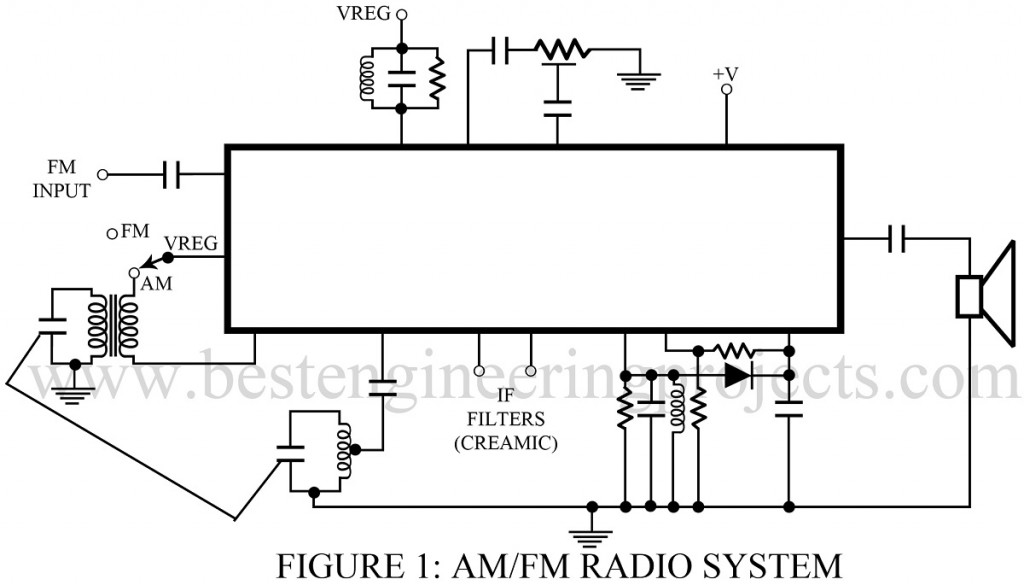The circuit designed hereby constitutes of the major portion of every AM/FM receiving system. It can be used to design a complete AM/FM receiving system. Addition of components like audio power amplifier, AM converter (mixer and local oscillator, AMIE detector, FM IF and FM detector) form the internal building block of entire receiving system.
However, for the receiving system to function flawlessly, external components like capacitors, coils, and resistors need to be included in the circuit which is obvious necessity. The operating characteristics such as bandwidth and gain of the overall system are reliant on the magnitude of external components mentioned earlier in this section. Not only this, external components play a significant role in the construction of necessary tank circuits for the tuning and IF sections. And in addition to these components, some of the extra features that may also be available on this chip include a regulated power supply, metering output, and audio muting. It can be considered a plus point to ensure the better performance of the circuit.
Some of the Key Parameters of AM/FM receiving system can be briefed in points below:
- The specified range of voltage level for the given supply is termed as the Operating supply range. This range of voltage is particularly useful as it permits for portable operation even as batteries discharge. A typical operating voltage range is 4 to 15 volts.
- The total amount of power dissipated specified at room temperature is Package dissipation. In cases when the chip has power amplifier inbuilt, 1.6W power dissipation is not a bizarre case.
- The total amount of power delivered to load at output terminal is Power output. 325mW is the typical value specified for output power delivered to an 8 ohm load, at 1 kHz, with total harmonic distortion equal to 10%.
Applications of AM/FM receiving system
In portable radios, car radios, and other types, this chip is implanted as a low power AM and FM receiver.
